Australia’s inflation fight, housing affordability crisis and the courage needed for serious economic reform were front and centre at an exclusive Business Sydney reception on Thursday night, featuring renowned entrepreneur and Yellow Brick Road Executive Chairman, Mark Bouris AM.
Hosted by Sydney City Lexus & Toyota Managing Director John Roca at the company’s Waterloo showroom, the event drew leading figures from business, politics and the community.
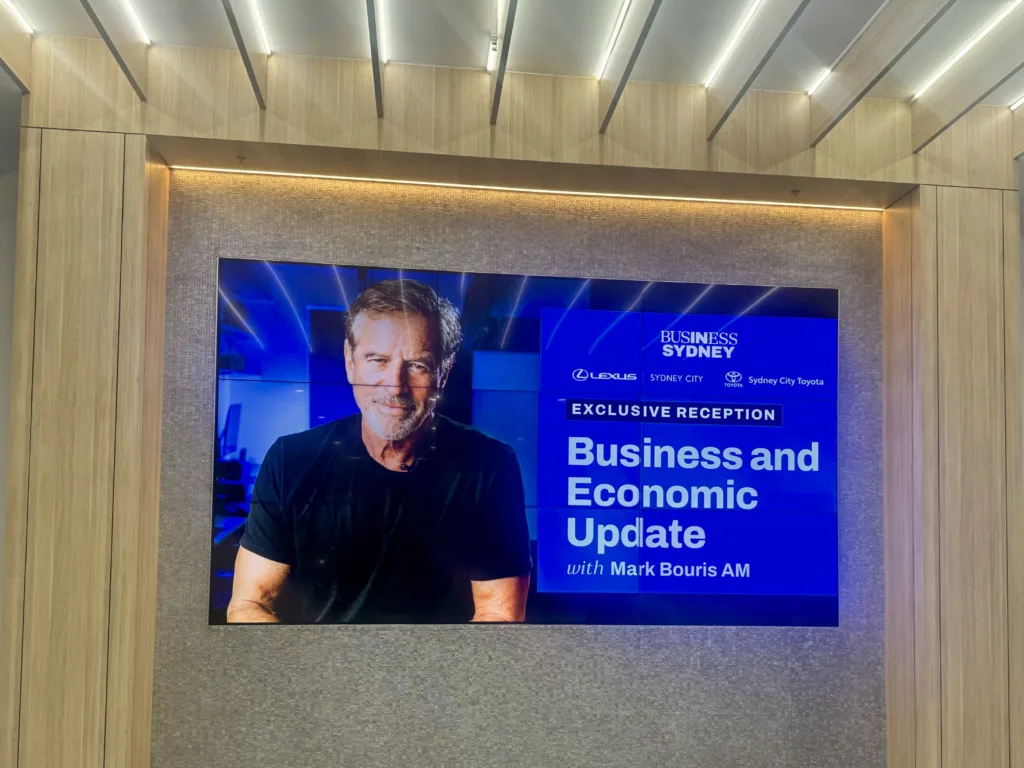
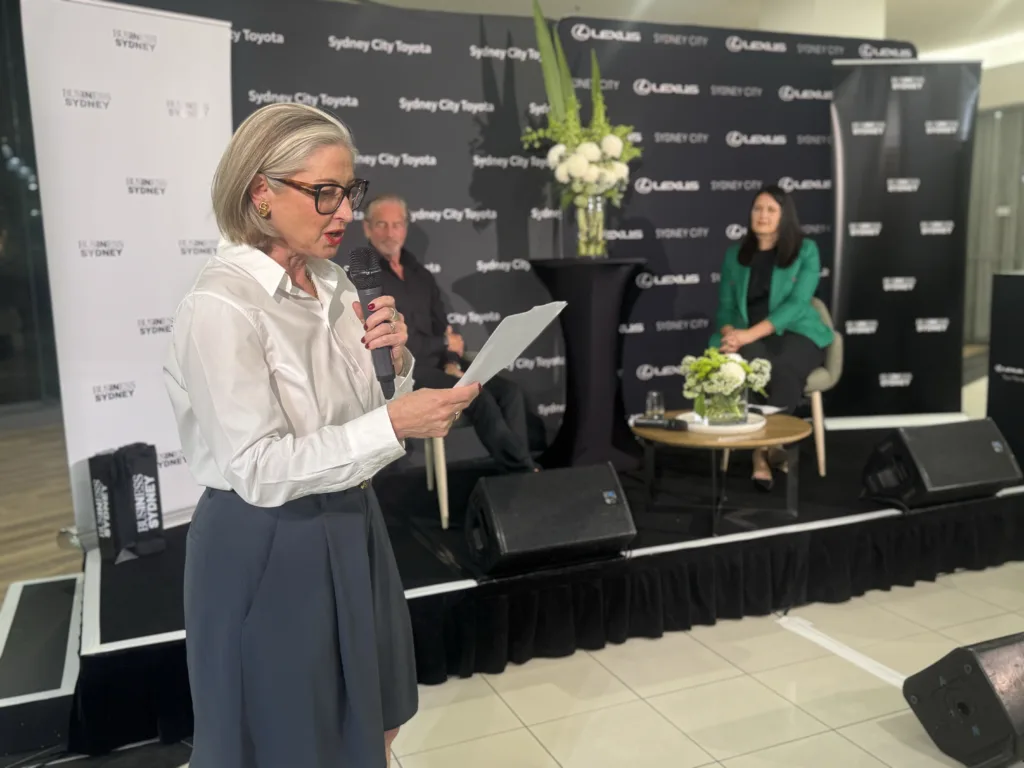
Bouris took part in a wide-ranging conversation with Besa Deda, Chief Economist at William Buck, after an introduction from Business Sydney’s Executive Director Paul Nicolaou.
While there was plenty of humour – including references to Bouris’ Punchbowl roots and his days building Wizard Home Loans – his core message was blunt: monetary policy is doing the heavy lifting on inflation while fiscal policy and housing settings risk leaving a generation behind.
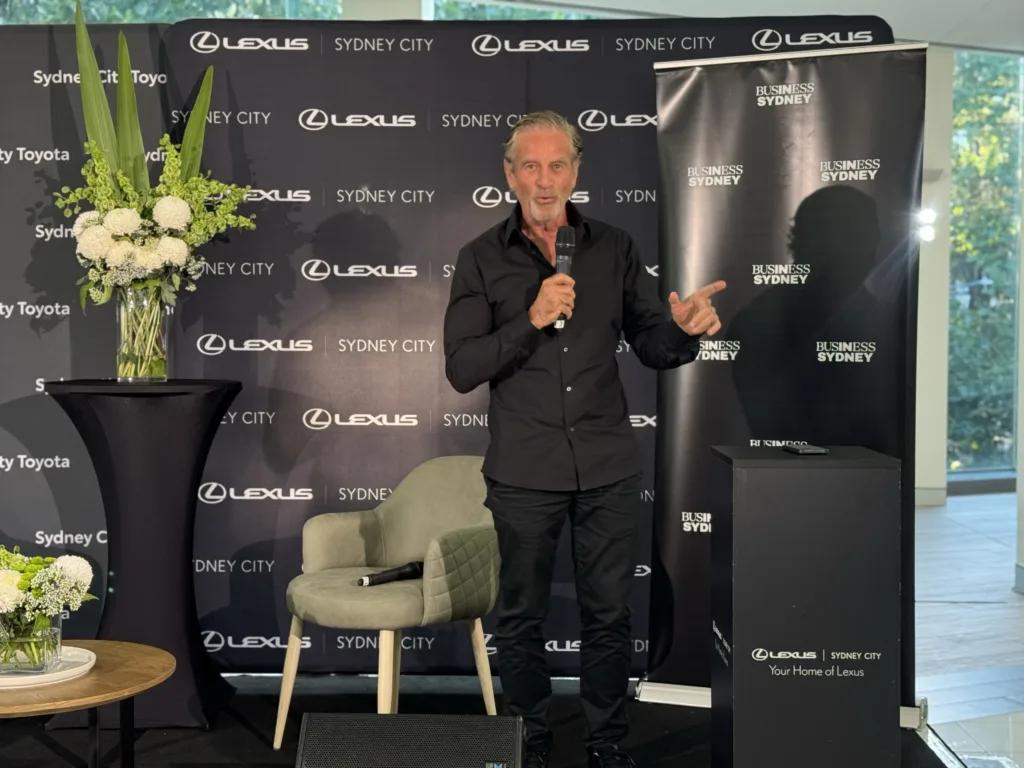

Reserve Bank ‘doing a great job’ – but all eyes on December
Bouris praised the Reserve Bank of Australia (RBA) for its handling of interest rates in the current cycle, saying the central bank was “doing a great job” in using monetary policy to protect the welfare of Australians.
He reminded the audience that the RBA’s mandate is “prosperity and welfare,” and that high inflation threatens both – particularly for households most exposed to rising living costs.
“When inflation becomes a problem, welfare becomes an issue,” he said.
“There’s a segment of society who don’t earn as much… and they are unduly affected when the cost of living outpaces their income… the Reserve Bank’s job then is to increase interest rates to stop the people who are spending the money, so that the people who don’t have money to spend have their welfare protected.”

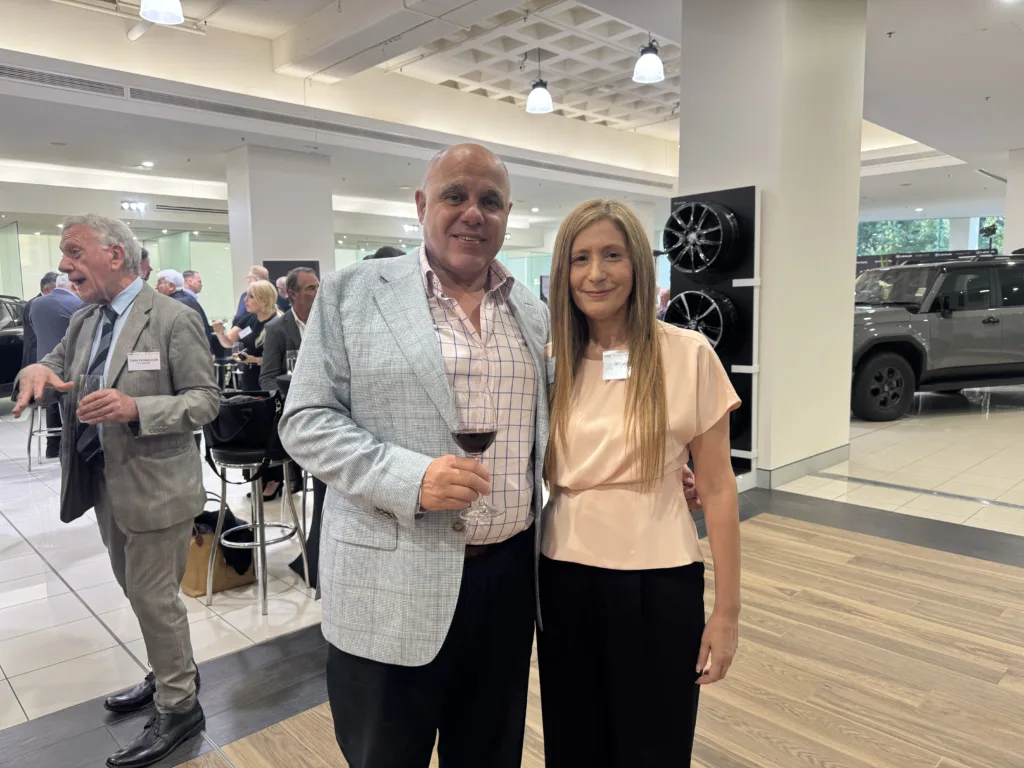
Bouris urged business leaders to pay less attention to day-to-day commentary and more to the RBA’s own language, especially in the short statement released after each Board decision and the Governor’s press conference that follows.
Citing the latest monthly CPI reading, he said the Bank was “not where it wants to be” on inflation and predicted Governor Michele Bullock would use the December meeting to “start conditioning the market” for the possibility of another rate rise, after several months in which markets had focused on when cuts might begin.
“At the end of the day it doesn’t matter what commentators say – it matters what the Reserve Bank thinks,” he said. “They’re the ones who make the decision, and as a result of that decision we all pay, or we all save.”


APRA’s new debt-to-income cap and a brutally simple housing equation
The conversation inevitably turned to housing – and the banking regulator’s new cap on high debt-to-income (DTI) lending. Under APRA’s recent announcement, from February 2026 banks will only be able to allocate up to 20 per cent of their new home lending to loans where borrowers take on debt greater than six times their annual income.
Bouris explained the change in plain terms: “What it means is if you earn $100,000 a year, you can’t borrow more than $600,000. The regulator is saying to the banks: only a small slice of your lending can be above that. It’s a big intervention.”
He linked APRA’s move to a broader point he has seen play out across Yellow Brick Road’s $2.5 billion-a-month mortgage business: house prices are highly sensitive to interest rates because most buyers think in monthly repayments, not total debt.
Using a property auction as his example, Bouris said that for every 50-basis-point move in interest rates, banks can typically lend about 5 per cent more or less – meaning borrowers adjust to the new limit almost immediately.
“Borrowers don’t walk around thinking ‘I owe a million dollars’ – they think ‘I pay this much per month’,” he said. “So if I can lend you $850,000 instead of $800,000, and you’ve still got your $200,000 deposit, you’ll spend the $850,000. That’s why prices jump.”
With Sydney’s median house price around $1.7 million, Bouris argued that limits on borrowing power, layered on top of high rates and surging living costs, are pushing home ownership further out of reach for many under 40.

Housing supply, tax and a system “spending more than it earns”
Asked what he would do to tackle housing affordability, Bouris didn’t pretend there was a silver bullet – but he highlighted three pressure points:
1. Skilled labour and apprenticeships – “We’re not going to give birth to carpenters and plumbers,” he said, calling for a rethink of the apprenticeship system so young tradespeople aren’t underpaid or poorly treated on worksites.
2. Planning and approvals – Builders he had spoken to in Victoria estimated that around 45 per cent of the cost base of a new house is made up of taxes, levies and council contributions – a figure Bouris described as a major concern.
3. Regulation and compliance – He cited data showing Australia now spends about 5 per cent of GDP on compliance and regulation, making it one of the most heavily regulated economies in the world.
“Try buying a house – your solicitor has known you for 25 years but still has to drag you in to sight your passport,” he said. “There’s a presumption everyone’s a crook. We’ve got to protect people, but we don’t need to go over the top.”
For Bouris, the underlying issue is a spending problem in government.
“If I ran my business the way the government runs the budget – always in deficit, just borrowing more and more – people would say I’m off my head,” he argued, invoking economist Milton Friedman’s line that “consumers never create inflation, only governments do.”

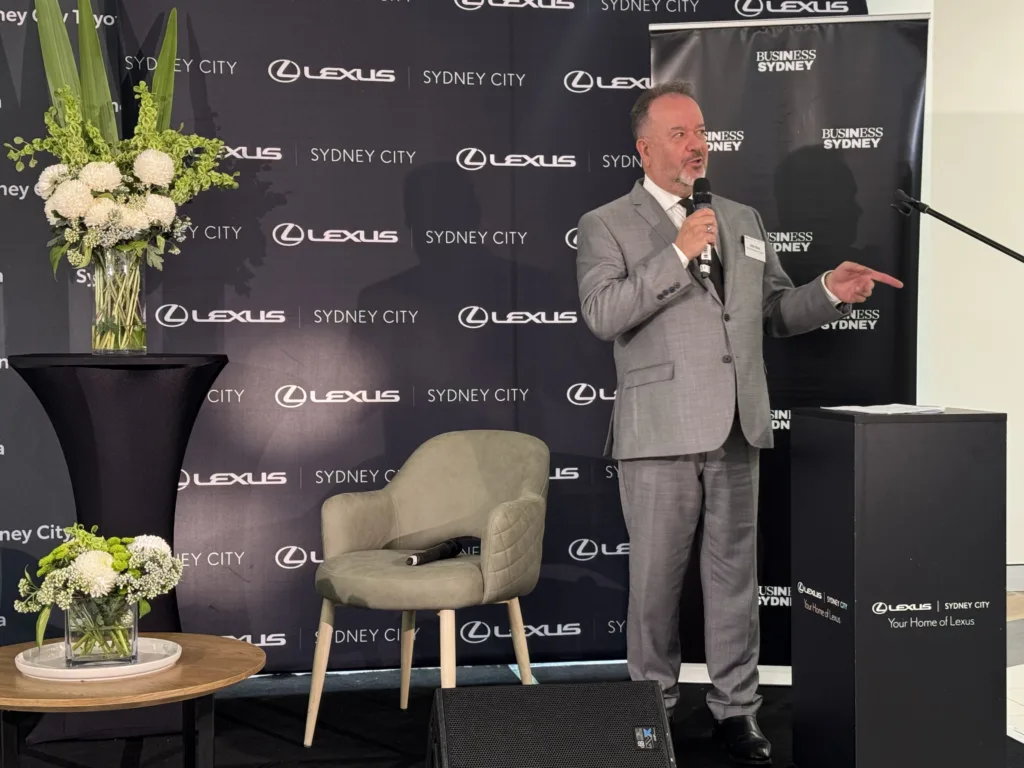
Parallel economies and the generational divide
Deda and Bouris also explored the idea of “parallel economies” – one cohort still spending freely, another cutting back sharply.
Bouris said a weekly trip through Sydney Airport made the divide obvious.
“There’s an age group that’s clearly travelling and eating out,” he said. “Older Australians who got onto the housing ladder early, who’ve seen incredible gains over the last 20–30 years.”
Deda agreed, noting that lower-income households, younger Australians and those with large mortgages are bearing the brunt of rate rises and inflation, while older, asset-rich households are more insulated.
For those under 40 only now entering the housing market, she warned, the returns of the past three decades are unlikely to be repeated, because the big structural drivers – falling interest rates and tax changes like the late-1990s capital gains discount – have already played out.
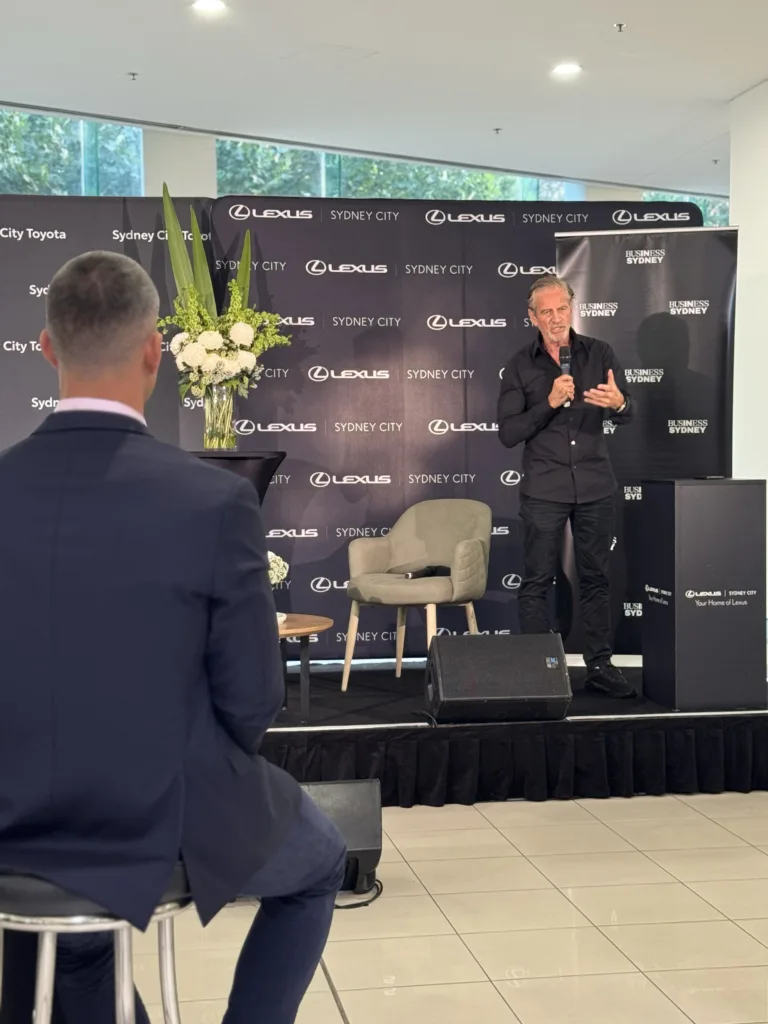
Calling for courage and redefining economic success
In one of the evening’s more reflective moments, Bouris contrasted today’s politics with the reform eras of Bob Hawke, Paul Keating, John Howard and Peter Costello, whom he credited with having the courage to push through controversial changes like the GST and gun laws.
He said Prime Minister Anthony Albanese and Treasurer Jim Chalmers face a much more fragmented “broad church” of voters and pressure from minor parties and social media, but argued that courage is still the missing ingredient in tackling issues like tax reform and housing.
“I’d love to see someone sit down and say, ‘Here are the two big things we’re going to fix,’” Bouris said. “Not reckless, but not cowardly either – real courage.”
Ultimately, he told the audience that the health of the economy should be judged not by abstract indicators, but by living standards.
“To me, the most important thing in a country is the standard of living,” he said. “Do you have a roof over your head? Can you afford the cost of living? Can you afford to get your kids a piano lesson, or a second-hand bike you can paint up? That’s what I call standard of living.”
As guests mingled in the Lexus showroom – engaging in thoughtful discussions over drinks and canapés – Bouris’ message lingered: an economy is only working if ordinary Australians can build a life, not just service a loan.

